

Well, I guess you are here to find the true voice of your instrument. Below is a case in point where I had to do just that. You have to know the truth before you can detect the lie the instant it appears. Can that be done in today's world? You can. But, it's not easy because everyone has a *Polished Turd* to sell you in one form or another.
The 1972 Fender Bass VI
On a Thanksgiving weekend in 2004, I received a telephone call from my long-time friend Elliott Randall, who had just returned to the United States. He asked me to stop over and see him. It was great to see Elliott again and to finally meet his wife, who was for the longest time, "a voice on the telephone"!At the conclusion of our terrific visit, Elliott presented me with a gift that took me totally by surprise! I was completely speechless; yet there it was in my hands, a Fender Bass VI !! I'd dreamed of owning one for many years, and here it was!! Elliott told me if anyone could really find out what this bass could do, I would.
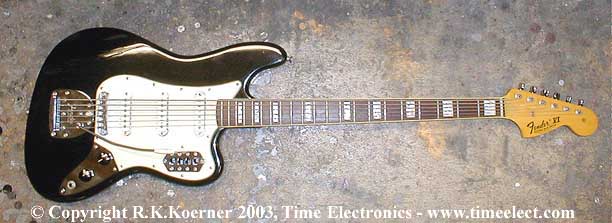
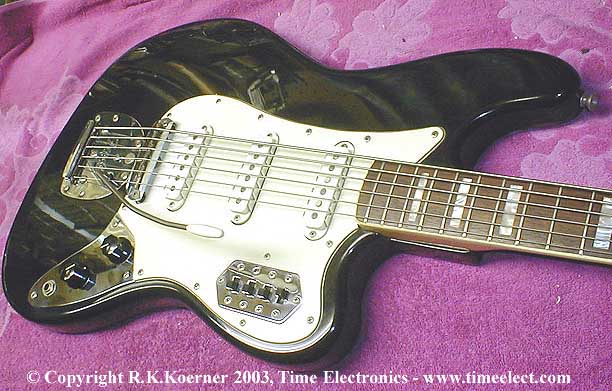
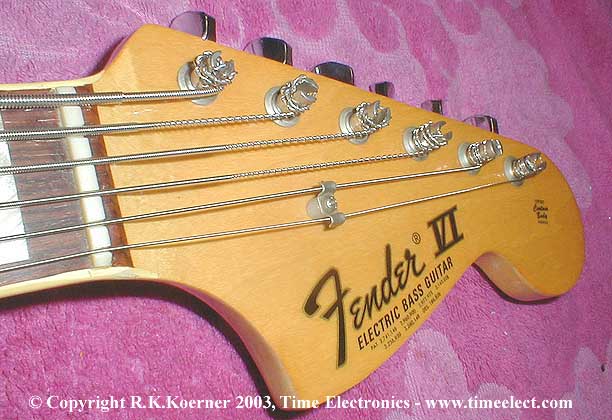
NOTE - the words Electric Bass Guitar.
Many mistake it as a Baritone guitar.
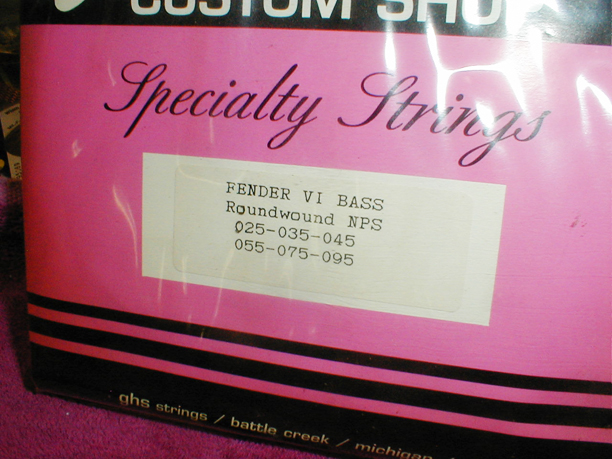
Step #1, Finding The VI's *Voice*
Right from the output jack to the sound card, to the Hard Drive... witness the captured voice of the Bass VI, without any pedals, tubes, distortion, on-board active electronics, etc.... just a bare ass straight as it comes from the string to HD voice capture. It's nice to know the voice of your instrument, BEFORE plugging it into an amp. YOU should know in advance, it's voice. After all, how will you know if the amplifier speaks the truth!
Start with a new set of strings. All computer software must be set for FLAT EQ in record and playback modes. Levels must not exceed 0 db. If you have active on board electronics, run the
instrument in by-pass mode.The ONLY thing you want to hear is the string's uncolored VIBRATION!
The idea is to explore how many ways can you make a string vibrate. Start with open strings.
How many ways in how many places can you make a string vibrate? See if you find the same kind of vibrations I found in my clips below. Then, save your clips as mp3's and burn them to CD for later evaluation. Here are my bass IV sound clips I recorded straight into the sound card.For you to hear them the same way I did, you have to burn all my clips to CD and play them through a really good stereo system that reproduces audio, not creates it. Every discriminating
muscian should have one.The standard computer speakers are as much a polished turd and most musical instrument pickups and amplifiers are. So, burn my clips, located below, to a CD, and slap them in your best stereo system. Also, some car audio systems can do the job. Roll the dice Give my clips a hard listen.
Just hit play, and don't change any of your EQ settings that you always use to listen to your music.
It Speaks:
Sample #1 (1.5Mb) - With the bridge pickup on and a thin pick, I found tons of
sustain, harmonics, and tone.
Sample #2 (1.1Mb) - With the bridge pickup on and a thin pick,
I went looking for some more good vibrations.
Sample #3 (1.5Mb) - Bridge pickup on and a thin pick,
open strings, fretted chords and some palm muting.
Sample #4 (1.9Mb) - All combinations of pickups activated at the bridge and over
each pickup.
Sample #5 (620Kb) - Finger picking with that thin pick and some palm muting.Sample #6 (1.1Mb) - Neck pickup on, tone control set to cut the highs, and notes are played
with the side of my thumb.NOTE - in clip #6 the sub harmonic content a full octive down below
fundamental frequency of the notes being played. Also notice that
the high harmonics are still present in the attack of the notes played.Example #1 Mp3
Video Compare the sound samples 1&3 to this Bass IV Lone Justice example.
Example #2 Mp3 Intro to Back In The Saddle Again by Aerosmith.
Compare the sound of Sample #6 to this next Example #3 track first with your
Balance Control turned all the way to the LEFT side. Now listen again to Track
#3 with the Balance Control turned all the way to the RIGHT side. Did you
Hear the difference in the BassIV tones. The bottom end on the LEFT side
had more deep fat bottom end thought possible from a guitar looking single
coil pickup. But, there it is in my Sample #6, and that side of the track Jack
Bruce recorded so many years ago.Example #3 Mp3
Video Something a little different and unexpected from Cream's Jack Bruce.
Example #4 Mp3
Video Flat wound strings were used on this recording.
Example #5 Mp3
Video A little something different sounding from The Cure.
Step #2, Listening to Your Real *Voice*
Next, take that CD of your clips and listen to them through your best stereo system. Just hit play, and don't change the EQ settings you listen to all your CD's with . What you hear is 50% your instrument and 50% how and where and how you started the string's vibration.
Your Touch! It's all about your touch.
Now, you will hear what you've been missing from your amp. How is the harmonic content? Did you find any overtones on fretted notes? Find any dead spots? How long was the sustain?
Does that low B string sound as good and even sounding coming out of your bass amp playing from the 12th fret all the way down to open B without any over tones or volume drop?
To be really sure do an A - B comparison of you playing your instrument through your bass amp to the clips you just played played through your stereo system. Can you adjust your bass amp to match YOUR sound clips?
Step #3, Does your Amplifier *speak* the truth?
Now, we and heard the truth from the instrument on your first CD. But, does instrument's amplifier speak the truth? Not likely.
To find the answer requires a Direct Box, another recording, and burning another CD.
You need a Direct box that connects to amplifier's output to the speakers to the sound card.
The Radial Engineering JDI MK3 Passive Direct Box, or the equivalent, is what you need.
If you have trouble finding one, call some top flight pro sound companies and/or recording studios in your area to see what they recommend using. See if you can rent one from them for this little project.
Now, using this direct box "properly" connected to the amplifier's speaker output line to the sound card line-in jack, you are almost ready to record.
Next, you have to plug in your instrument and do the best you can finding the tone settings that gets as close as you can sounding like the clips on your first CD. Take your time doing this.
When you feel your setting is as close as you can get, you are ready to record the next CD.
Now unplug your instrument from your amp and plug in your CD player. Slap in the CD player your first CD of sound clips, and now record what the direct box sends to your computer, in the same way you recorded the first CD.
To find out what is missing from your amp can now be found with a RTA (real time analyzer)
comparison of these now two CD's.
Step #4, Does your speakers *speak the truth?
Again, my answer is the same. Not likely! For you to find out at this point is real easy.
Just hookup your amplifier's speaker/s to one channel to your stereo and play your first CD of your instrument's sound clips. Then, compare the difference between both sides. There you go.
Just use your balance control to make them both the same volume. It doesn't have to be loud to hear the differences.Can I help out with these kind of problems musicians have in finding thoses tone they can't find? I sure can in many ways. At this point, if you are still with me, you have burnt the CD's, you have listened to them... then you KNOW I'm really on to something, and it's only the tip of the ice burg so far. There's a lot more ground to be covered to fully understand the big picture.
So, where do we go from here, you may be thinking right about now.
Well, as I said at the end of Step #3... I can find out what is missing from your amp with a RTA (real time analyzer) comparison of these now two CD's, I can...
1. Design a pre amp that allows you to target the missing frequencies to feed the amplifier.
2. If the amp in question is a vacuum tube amp, I can built this pre amp into the amplifier.
3. Design a pre amp that targets and controls the frequency range of your instrument based on the RTA printout of your first CD. That with the properly a selected power amp and speakers is another possibilty.
I can be reached by by email with richk@timeelect.com
Put this line below in as the subject line.
!!!!!!!!!!!!!!!!!!!!!!!!!!!!!!!!!!!!!!!!!!!!!!!!!!!!!!!! HEY RICH !!!!!!!!!!!!!!!!!!!!!!!!!!!!!!!!!!!!!!!!!!!!!!!!!!!!!
To find out more about what you have been missing click on the Fender Bass IV below
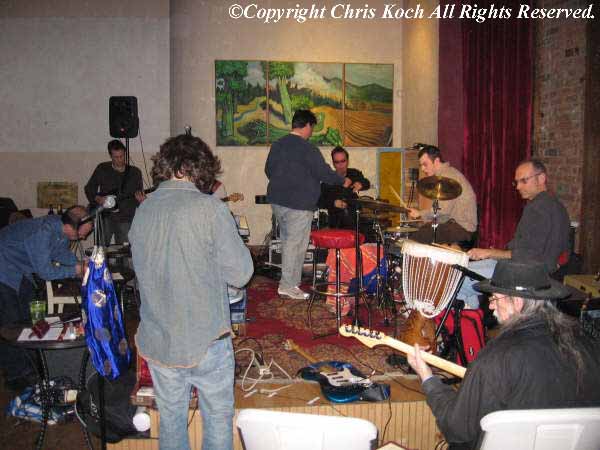
That's me with that Fender BassIV listening for the space to add my voice to the musical conversation.
| To Home Page | E - Mail Us |